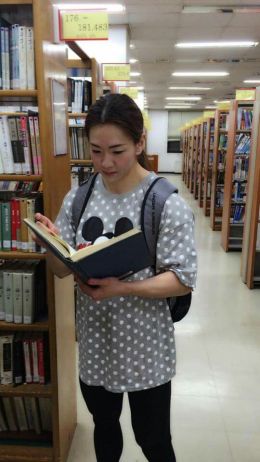The weaker sex? Science that shows women are stronger than men
Physically men on average are stronger, but in terms of durational strength women have an advantage. It has been confirmed, that women live longer than men and may cope better with illness including trauma. There is a gap in terms of old age between men and women. The article from The Guardian examines how there are sex differences in aging and how it relates to overall health. Gerontology seeks to study and explain the process of senescence. Biological aging and death are still a mystery. Biomedical science has not studied women in a serious manner, but that has began to change. Such examinations may hold the key to prolonging life and fighting age related diseases. The information written in the text comes from the Centre for Study on Sex Differences in Health, Aging, and Disease and the Gerontology Research Group. It was once believed that men were better suited for survival, because they were biologically tougher. This was a myth based on gender stereotypes. Medicine had a tradition of casting the female body as inferior or an object that needed to be controlled. Research has shown that women are not biological inferiors, but have evolved to be survivors.
The research demonstrates there exists two types of strength. Physical strength which is the level of exertion and force that a person can induce upon an object. Durational strength is how long a person can live in total years. It is dependent on health condition, genetics, and environment. Steven Austad describes women’s total life expectancy as being more robust. The biologist who is an international expert on aging discovered from his findings that women lived six years longer than men. This would indicate that women on average have higher durational strength. Unlike what Angela Saini claims “the physically strong woman is almost a myth” there is more to the human body and the science behind it. The female body is more capable of amazing feats than once believed by exercise physiologists. Women historically were restricted in using or having control of their bodies. Physical power and fitness are not male only. The frailty myth was born out of 19th century Victorian Age pseudoscience. It stated women need more rest when they reached puberty and that too much exercise would damage their reproductive organs. There was also a sexist bias in terms of what was considered gender appropriate. Since then, women have gain more opportunities to play sports and engage in physical activity. The false claims were discredited and a change occurred. The only reason female athletes are “gazed upon as other worldly creatures” has to do with people’s view of gender and the female body. Cultural perceptions of the the female body being weaker or women lacking physical competence was common place. Now this perception is shifting and with new information in regards to health it seems arguments of women’s biological inferiority are nothing more than fantasies.
The reason people feel “they break the laws of nature” has to do with sex based biases. There are people who still believe that sport is not proper for a woman. There has been a change in attitude in regards to women, exercise, and health. Strength sports specifically, women are becoming more involved in. Even the “everyday woman” has taken a interest in exercise, not just the professional athlete. Robustness, toughness, and physical power are associated with the male body, but not out of women’s reach. The physical strength difference is based on the size and endocrinology of the male physique. However, this does not mean men will live longer than women. Denser bones and more muscle mass of men means they will not be as susceptible to osteoporosis. That is one health difference that is based on sex. What must be understood about physical fitness is that men have higher capacity. Women’s bodies do respond to training an they can increase fitness levels. Men have a higher physical fitness capacity for strength, but this does not indicate a form of superiority. What it reveals is a long evolutionary history still being shaped by genetics and constantly changing environments.
Women have a greater chance of living to old age than men. According to The Gerontology Research Group there are only 43 people today who have lived past the age of 110. Women account for 42 of the group, with one man being the survivor. Violet Brown holds the record of the oldest person being 117. She was born in 1900 and pasted away in 2017. It is a mystery why nature has made men expendable in this regard. Durational strength does not emerge later in life, but starts with the gestation process. Boys are more likely to die when being delivered. Even when healthcare is the same quality, boys are at a 10% risk factor. Research produced from the University of Adelaide indicated that depending on the sex of the baby the placenta may behave differently. The body reacts by bolstering the power of the immune system and girls may get the most benefit. The reason girls and women are protected may have to do with evolution. Reproductive strategies for some organisms involve the female producing large amounts of young. This would mean the female of that species would have to be larger to carry eggs. This can be seen in arachnids and species of birds. Seeing as women give birth to only one child or just a few more ( twins, triplets, or quintuplets), survival of the female would be more critical. They birth offspring and this method seems more efficient than having young all at once. This is a possible explanation why their is sexual dimorphism in primates. This also includes homo sapiens who do have a level of sexual dimorphism. It can be flexible to a degree. Most men are taller than women, but there are tall women. Obviously, there are women who are stronger than many men.
There is a level of genetic diversity among people, which results in variation. A possible method would to solving this puzzle is to examine the life span of primates such as gorillas or chimpanzees. More information could be extracted from chimpanzees seeing as human beings are closer to that ape genetically. If the females of these apes lives longer then that means women’s longevity does have an evolutionary basis. This could mean the reason girls survive even in the early stages has a genetic basis.
Both men and women are vulnerable to disease, but women may fare better. Infections and common colds women cam handle better in terms of immune response. Cardiovascular disease occurs much sooner in men than it does women. Hypertension also a major culprit to health showed a distinct sex difference. Men get high blood pressure earlier. This could not only be a genetic factor, but environment as well as habit based. Americans are becoming more sedentary and getting less physical activity. Combined with high sugar and fat based diets, this will cause problems with cardiovascular health. Exercise and a healthy diet is the best method to avoid cardiovascular disease. The findings of Austud revealed in 2010 that women died at lower rates from heart disease and cancer. Men and women were both equal in terms of likelihood of dying of a stroke or Parkinson’s disease. One problem specific to women comes with longevity. The longer one lives the possibility of neurodengenrative disease increases. Women are more likely to die from Alzheimer’s disease. A powerful immune system also comes with a price. Women are more vulnerable to autoimmune diseases such as rheumatoid arthritis and multiple sclerosis. Autoimmune diseases are when the immune system attacks cells that are healthy in the body. Women’s immune systems have to be flexible for pregnancy. That is why a woman’s immune system is more active during the second half of the menstrual cycle. Immune response is also related to endocrine function by estrogen and progesterone. It seems that exercise, diet, and general habits can prevent many diseases.
There are genetic and biological factors that determine health. The environmental element is also critical to an individual’s life expectancy. Then there has to be some recognition of how disease and healthcare functions. The medical profession puts an emphasis on prevention, rather than investing in cures. There is too much reliance on drugs for certain aliments that could be addressed with a change in diet and lifestyle. Only recently have doctors been seeing the connection between mental states and physical health. Mental health is just as important as physical health. There has been in the US an increase in mental health disorders, notably bipolar depression. The text does not mention how mental health differs between the sexes. This is a topic that is significant, because a person changes psychologically over a lifetime. The body needs exercise. The brain also requires it. Learning new things or being active may help prevent cognitive decline.
There still is not an exact reason for why some get Alzheimer’s disease. Only theories are proposed for this age related disease. The death of brain cells indicates as well as other forms of dementia that human beings have a cellular limit. Mitosis changes over the span of the human life cycle resulting in dying cells not easily being replaced in various organ systems. Oxidative stress from free radicals will take its toll as a person ages. The only reason it appears more women are ill is because more of them survive. Advanced age women out number advanced aged men.
There are sociological reasons for the difference in longevity. Women are most likely willing to make regular doctors appointments. Men do not do this as frequently, which may result in late diagnosis of chronic illness. It seems in some societies women take the condition of their health more seriously. Men may also eat more unhealthy diets. This may not be entirely true, because if men and women have access to the same food their diets would not be that different. Then another problem would be buying such food. Junk food is by comparison cheaper compared to nutritious alternatives, which may also cause a disparity in health relative to socioeconomic status. The poor or discriminated ethnic groups in a particular country often suffer from lack of medical treatment or adequate healthcare. Life expectancy is lowered by terrible socioeconomic conditions. Affordable healthcare is still out of reach for many of the world’s population. The disparity even extends to geography. Western nations have higher life expectancy mainly due to the fact they have government run programs and the infrastructure to support it. The United States is one of the few industrialized nations that does not want to provide a government run healthcare system. The Affordable Care Act was designed to get people insured who otherwise would not have had healthcare. There is also a divide between rural and urban communities. Rural healthcare is low quality with few hospitals and few options in terms of healthcare plans. Women may also benefit from a difference in behavior. Men are more willing to work jobs that are more dangerous. This does not women would not work these jobs, but their numbers a smaller in comparison.
This difference in risk taking and to a degree competition may harm attempts at creating full equality. Combat positions have been open to women in the US, yet in some areas of the military women have not signed up. This debate comes down to nature versus nurture. The question should not be nature versus nurture. The mystery is how much do nature and nurture collaborate. Granted many women may not be able to fill such positions that are physically demanding due to the difference in physical fitness capacity. Yet, there still is discrimination that is present, even with laws prohibiting it. Women are also discouraged at a young age from going into particular fields. That is just one paradigm of the nature and nurture collaboration. Men are also taught to do things that are deleterious to their well being. The machismo around “proving ones” self leads to perilous situations or confrontations. Men may overwork themselves in pursuit of prestige or to up hold the role of leader of the community. Placing extra burden on themselves can cause health problems later in life. The lugubrious reality is that men inflict more violence on other men. This can be seen in crime statistics. Warfare puts men at a disadvantage, because they will be drafted. Sociological factors such as geography, healthcare, or occupation can effect longevity.
Hunter gatherer societies may allow for a hypothesis why women were given the edge in longevity. Women probably in the ancient past did the same amount of physical work as their male counter parts. Women most likely had to do physical work along with childcare. The need for durational strength was a necessity. Women’s talent for endurance running reveals that women were probably more physical in the past, because it was pertaining to survival. When the rise of permanent settlement changed women’s health and physiques. The bones and muscles shrunk in terms of mass after the Paleolithic and Neolithic Ages. Women’s endurance can best be described as an adaptation to environment. The migration out of Africa was a vigorous journey. That endurance not only protected women, but the young they were carrying. Saini poses the question why are we all nor amazons? The answer is lucid, when looking at other people. There is variation in human populations. This can range from height to skin color and body type.
Human beings do not all look the same because our phenotypes vary due to genetics and environment. The association of the female body being small and waif like seems to be a modern day invention. The article does expose that ideas does not represent reality. There are countries today were women are involved in physically demanding labor. A majority of women in the Global South are employed in agriculture. There are more women going into sports, law enforcement, construction, the military, and occupations that were considered male only. There is not only biological evolution, but cultural evolution. The cultural evolution is the change of women’s roles through history. One change was the improvement of women’s health. Childbirth was in the past could mean for women possible death. Women now have safer medical treatment for childbirth. There still are disparities in terms of infant mortality. What can be extrapolated from this data and evolutionary history is that there is no such thing as a weaker sex. Trying to prove that a weaker sex is real would not survive the test of the scientific method. Although women do live longer and have more durational strength, there are issues surrounding women’s health. Access to contraception, healthcare, and higher rates of breast cancer are persistent threats. Women still remain the long time survivors.



























